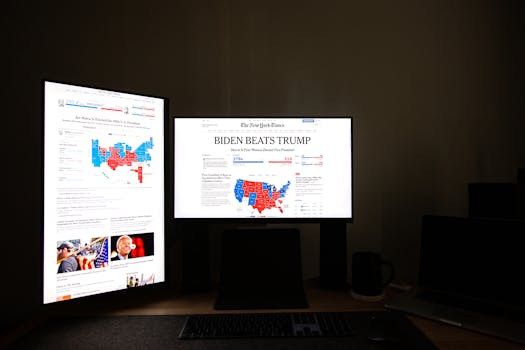+17162654855
+17162654855
MSR Publication News serves as an authoritative platform for delivering the latest industry updates, research insights, and significant developments across various sectors. Our news articles provide a comprehensive view of market trends, key findings, and groundbreaking initiatives, ensuring businesses and professionals stay ahead in a competitive landscape.
The News section on MSR Publication News highlights major industry events such as product launches, market expansions, mergers and acquisitions, financial reports, and strategic collaborations. This dedicated space allows businesses to gain valuable insights into evolving market dynamics, empowering them to make informed decisions.
At MSR Publication News, we cover a diverse range of industries, including Healthcare, Automotive, Utilities, Materials, Chemicals, Energy, Telecommunications, Technology, Financials, and Consumer Goods. Our mission is to ensure that professionals across these sectors have access to high-quality, data-driven news that shapes their industry’s future.
By featuring key industry updates and expert insights, MSR Publication News enhances brand visibility, credibility, and engagement for businesses worldwide. Whether it's the latest technological breakthrough or emerging market opportunities, our platform serves as a bridge between industry leaders, stakeholders, and decision-makers.
Stay informed with MSR Publication News – your trusted source for impactful industry news.
Energy

The recent claim of victory by former US President Donald Trump regarding Iran's nuclear program has reignited a fierce debate about the location and quantity of Iran's enriched uranium. While Trump's statement lacked specifics and verifiable evidence, it highlights the persistent opacity surrounding Iran's nuclear activities and the crucial need for transparency in international arms control. The question, "Where is Iran's enriched uranium?" remains a key concern for global security.
Trump's declaration, made without offering concrete proof, asserted a significant achievement in limiting Iran's nuclear capabilities. However, independent verification of such a claim remains absent. The lack of transparency from both Iran and, to an extent, the international community, fuels speculation and skepticism. This opacity hinders effective monitoring and verification efforts, which are vital for ensuring compliance with the Joint Comprehensive Plan of Action (JCPOA), also known as the Iran nuclear deal, even though the US withdrew from it in 2018.
This lack of transparency significantly impacts the international efforts to curb Iran's nuclear ambitions. The uncertainty surrounding the location and amount of enriched uranium makes it challenging to assess the true extent of Iran's nuclear program and its potential for weapons development. This ambiguity undermines trust among global powers and further complicates diplomatic efforts to resolve the ongoing nuclear crisis.
Understanding the importance of enriched uranium is paramount to grasping the gravity of the situation. Enriched uranium, with a higher concentration of the fissile isotope U-235, is crucial for both nuclear power generation and the creation of nuclear weapons. The level of enrichment is the critical factor; low-enriched uranium (LEU) is used in nuclear reactors, while highly enriched uranium (HEU) is suitable for weapons.
Iran's enrichment levels and the quantity of enriched uranium it possesses are, therefore, key indicators of its nuclear intentions. The international community is deeply concerned about the possibility of Iran rapidly accumulating enough HEU for a nuclear weapon. This concern drives the need for rigorous monitoring and verification mechanisms.
Pinpointing the exact locations of Iran's enriched uranium is inherently difficult due to Iran's lack of complete transparency. However, based on previous reports and intelligence assessments, several potential locations are speculated, including:
Natanz Nuclear Facility: This is Iran's primary uranium enrichment facility and is widely believed to house a significant portion of its enriched uranium stockpile. The facility has been subject to several attacks and sabotage attempts in recent years, highlighting the heightened tensions surrounding Iran's nuclear program.
Fordow Enrichment Facility: Located in a mountain near Qom, Fordow is a highly fortified underground facility, making inspections and verification significantly more challenging. Its existence underscores Iran's commitment to shielding its nuclear activities from international scrutiny.
Other Undisclosed Sites: It's plausible that Iran holds enriched uranium at other, undisclosed locations to further complicate verification efforts. The lack of transparency increases the risk of surprise discoveries and escalates existing concerns.
The IAEA, the United Nations agency responsible for monitoring nuclear activities worldwide, plays a crucial role in verifying Iran's compliance with its nuclear safeguards agreements. However, the agency's ability to effectively monitor Iran's activities has been hindered by Iran's limited cooperation and the lack of complete access to all its nuclear facilities. The IAEA's reports are highly anticipated, providing valuable – though often incomplete – insights into the ongoing situation.
The uncertainty surrounding Iran's enriched uranium has profound geopolitical ramifications. The possibility of Iran developing nuclear weapons would destabilize the Middle East and potentially trigger an arms race in the region. This could lead to heightened tensions between Iran and its adversaries, increasing the risk of regional conflict.
Furthermore, the issue has global implications, particularly for the nuclear non-proliferation regime. A failure to effectively monitor and contain Iran's nuclear program could embolden other states with nuclear ambitions, undermining the international efforts to prevent the spread of nuclear weapons.
Addressing the concerns surrounding Iran's enriched uranium requires a multifaceted approach, focusing primarily on increased transparency and renewed diplomatic efforts. Iran must demonstrate its commitment to peaceful nuclear activities through complete cooperation with the IAEA and allowing full and unfettered access to all its nuclear facilities.
The international community must also work collaboratively to create effective verification mechanisms that can ensure Iran's compliance with its obligations. This includes strengthening the IAEA's monitoring capabilities and fostering open communication and cooperation among relevant stakeholders. Ultimately, a diplomatic solution that addresses the underlying concerns and fosters trust among all parties is crucial for achieving long-term stability and preventing a catastrophic escalation. The future hinges on addressing the question of "Where is Iran's enriched uranium?" with honesty and transparency.